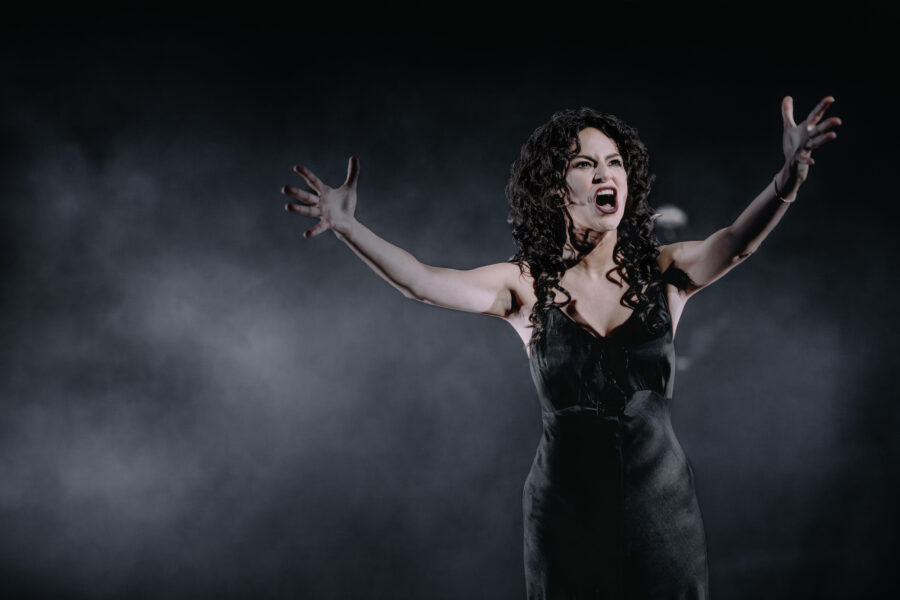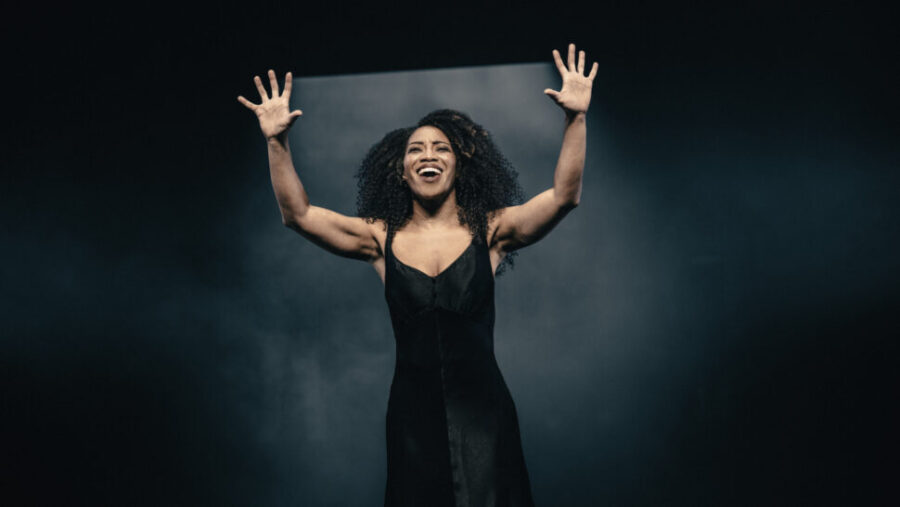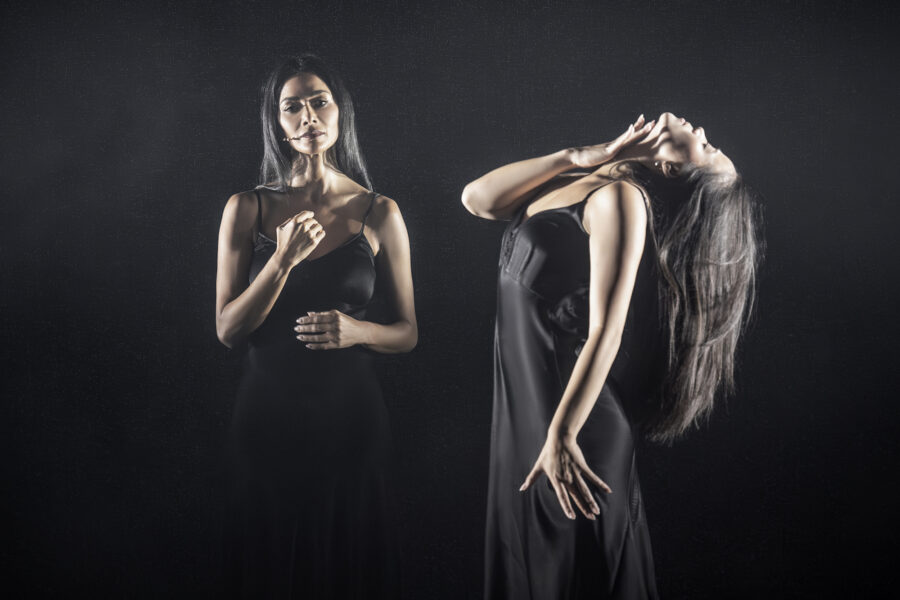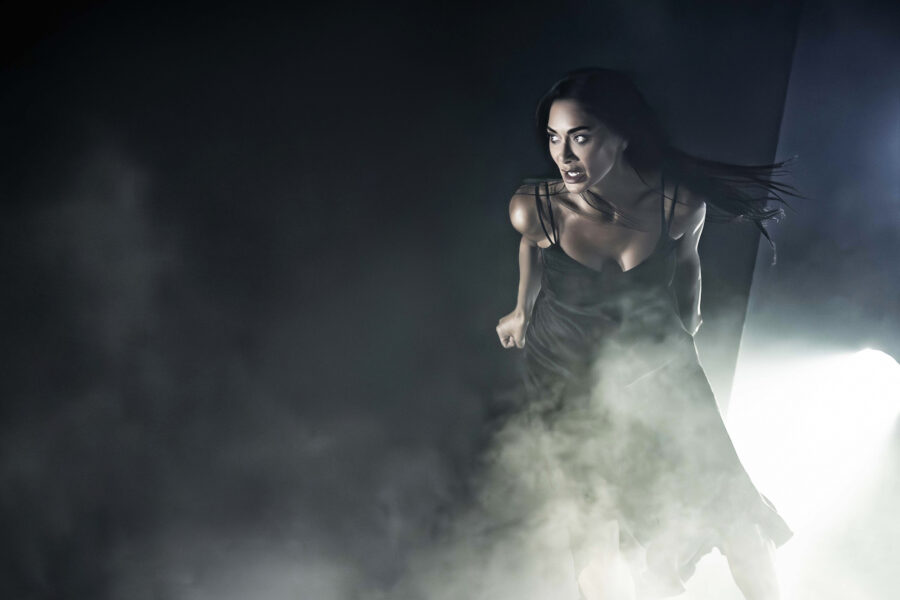Sunset Blvd, a show that is typically staged with glitz and opulence, is getting its minimalistic moment with Director Jamie Lloyd’s revival. What it lacks in set design it makes up for in other details—and hair and makeup is no exception.
A primary theme of the show is beauty. It centers around the fading stardom of Norma Desmond, played by an alluring Nicole Scherzinger, the former lead singer of the Pussycat Dolls. It was pivotal to get Norma’s look right, especially without the glamorous costuming that’s usually associated with this role.
“Norma needs to be fearsome when she walks out on that stage. Even though the first time you see her, she’s very broken because she’s lost something that’s very dear to her,” says Cheryl Thomas, Sunset Blvd’s Hair and Makeup Designer. “She’s very broken, but she’s dynamic at the same time because she’s this powerful star.”
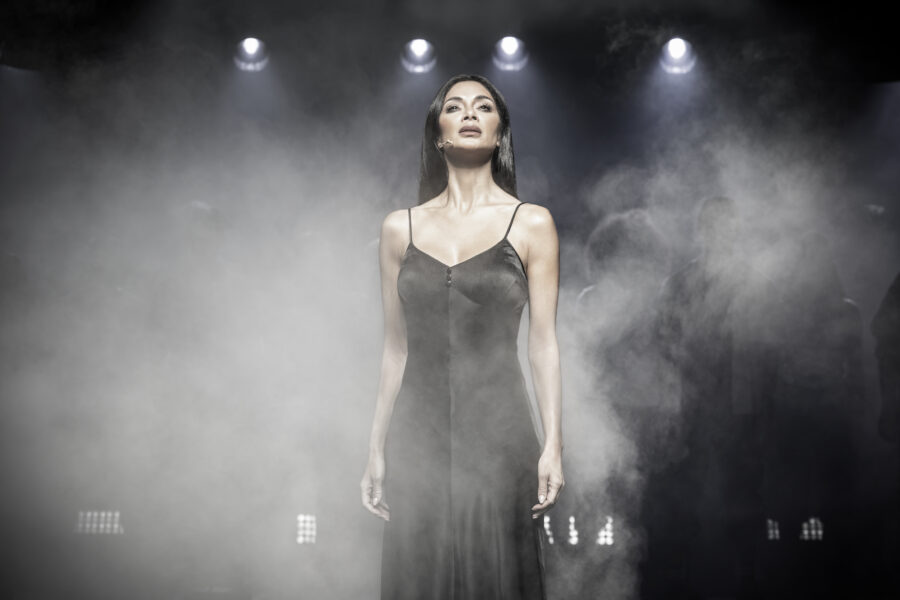
Iconic to Scherzinger’s portrayal of Norma is her long, silky hair that at times seems to be a character of its own. However, Thomas wanted to make sure that Scherzinger, along with guest star Mandy Gonzalez and standby Rashidra Scott, each had an opportunity to feel powerful in their version of Norma.
“Nicole has a Polynesian background, so her hair is straight and black. And I didn’t want to make every Norma have straight hair, no matter what their ethnic background was. I wanted that because that look is very true to Nicole,” explains Thomas.
“I want everyone to feel like themselves, just on an elevated level, for the stage.”
Thomas made it a point to honor the cultural backgrounds of each actress and their individual wants and needs. “When I talked with Mandy, I was like, I like what your [hair] texture is doing, and I want to keep that true to who you are as a Hispanic person … I’m going to keep you looking like Mandy Gonzalez that’s playing Norma Desmond and not a cloned copy of Nicole Scherzinger,” she explains. “It’s the same thing I did with Rashidra Scott … I want [Scott] to look like a fearsome, powerful black woman. That’s the first black woman that’s playing this role on Broadway, and let’s pull forward the beauty of her hair, her texture. I want everyone to feel like themselves, just on an elevated level, for the stage.”
Ultimately, the show follows Norma’s tragic decline, and that is paralleled in the character’s makeup design. “[Norma’s] makeup is shifting and deteriorating. She’s breaking down towards the end and she’s really falling apart,” says Thomas.
The ensemble’s makeup stays consistent throughout the show, providing a steady visual that makes the fallen star’s deterioration even more apparent. There is also one character who serves in direct contrast to Norma: Betty Schaefer (Grace Hodgett Young), a budding writer who enters a dangerous love triangle with Norma and Joe Gillis (Tom Francis).
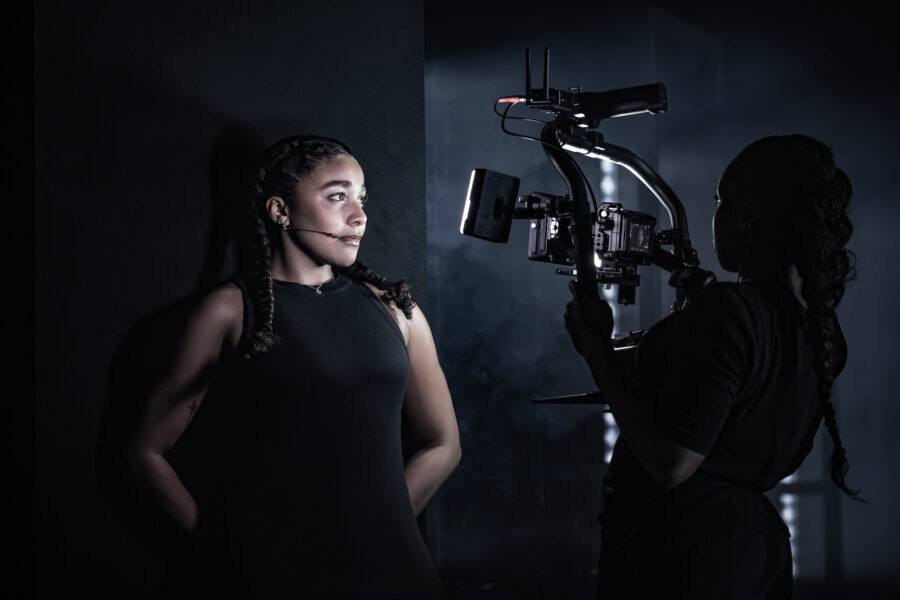
“I did a bit of a dewy shimmer on [Betty’s] cheeks to represent the youthfulness of who she is,” says Thomas. “So whenever you see Betty on screen, her skin is just young and dewy and youthful.”
A distinctive element of this revival are handheld cameras that project the actors’ black-and-white images onto a huge screen. A nod to the original 1950 film, it’s also a rare opportunity for a theatre audience to see actors’ faces up close and personal.
“It was really important for me to use the things that I’ve learned in my background in working in TV and film and make that marry together so that once you’re looking at the screen—the projection part of it—and then you look back at the stage part of it, [Norma] doesn’t disappear. She’s equally as dynamic in both mediums,” Thomas explains.
“[Norma’s] makeup is shifting and deteriorating. She’s breaking down towards the end and she’s really falling apart.”
In general, many of the decisions Thomas made were based on how they would read on black-and-white film.
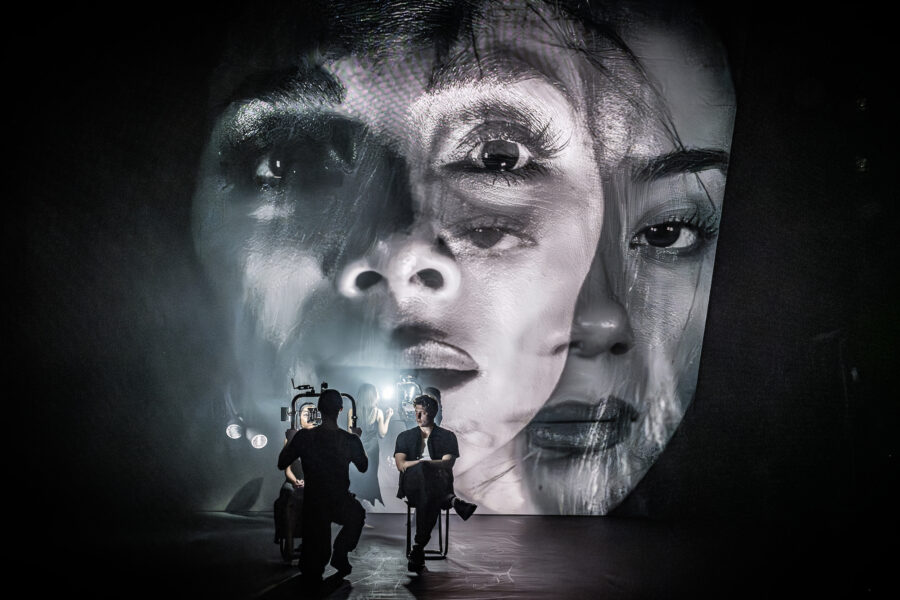 “If I used a pale pink or nude, when it reads on the screen, for black and white, it’ll read non-existent. So, it was really important to have colors that are going to transition and read on the screen as well,” Thomas shares. “So, you find yourself more in your earth-tone colors, some hints of red but not strong because any earth-tone lip color is going to read as a red on the screen.”
“If I used a pale pink or nude, when it reads on the screen, for black and white, it’ll read non-existent. So, it was really important to have colors that are going to transition and read on the screen as well,” Thomas shares. “So, you find yourself more in your earth-tone colors, some hints of red but not strong because any earth-tone lip color is going to read as a red on the screen.”
The show also plays around with shadows and light, which was something that Thomas also had to consider. For example, makeup changes depending on if a blue-based or a red-based light is used. There are times during the production when the entire stage is bathed in red light or when spotlights illuminate certain actors.
“Lighting is so important,” says Thomas. “That all factors into your makeup design and what’s going to work and what’s going to read in the right tones and colors that you want it to read in, and how it affects even the skin tone of the actor.”
Sunset Blvd’s story has always been a tragedy, and this production bends into horror, especially in its final moments. The themes may not be new, but they land with a chill: the industry’s feelings about aging women haven’t changed.
Through her detailed hair and makeup design, Thomas has crafted an achingly beautiful portrait of womanhood, image, and decay. Despite Norma’s descent into madness, when we look at Scherzinger—the once-revered idol who was tossed aside by the Hollywood she helped create—we feel her pain.
Sunset Blvd, at the St. James Theatre. Running time: 2 hours 35 minutes. For tickets: sunsetblvdbroadway.com

